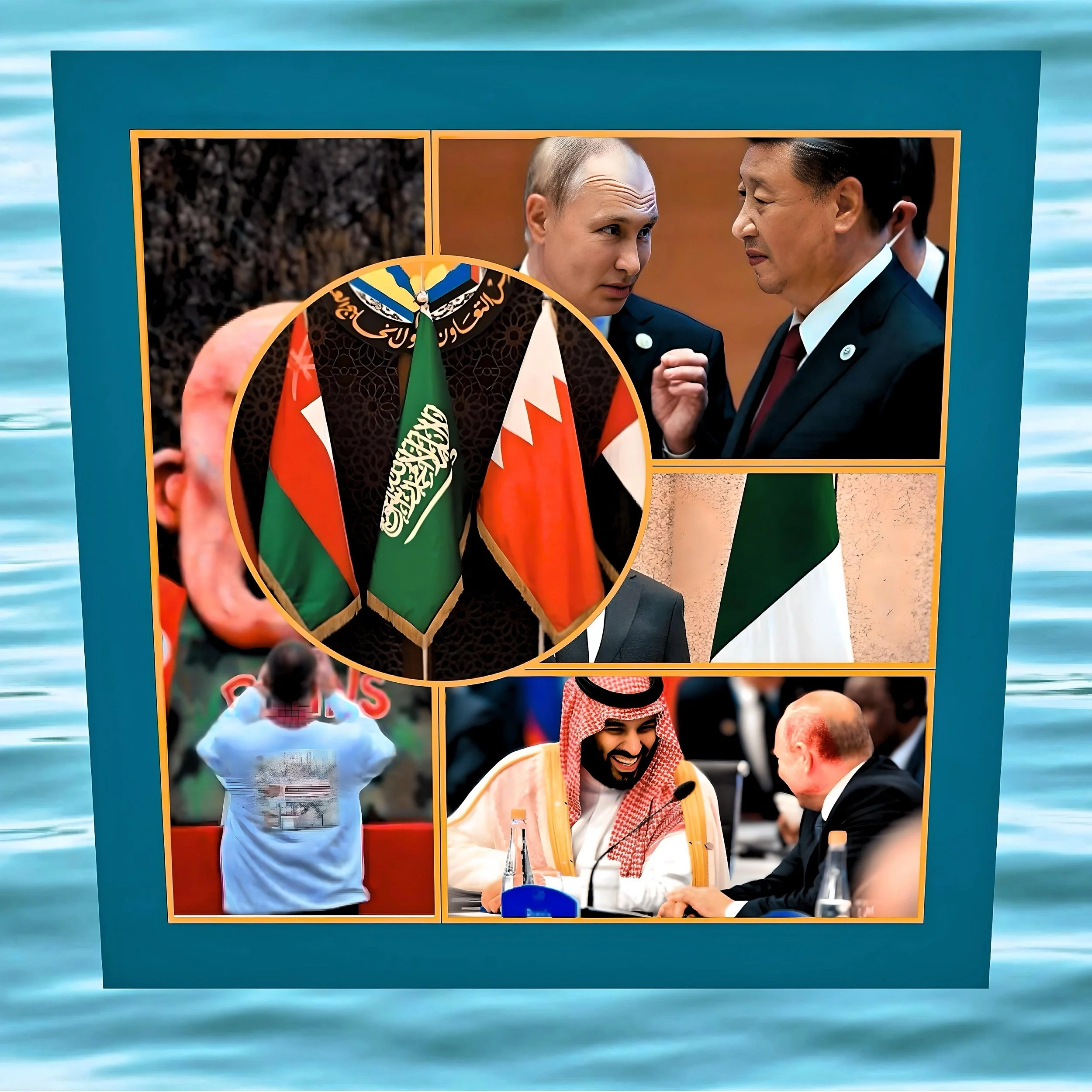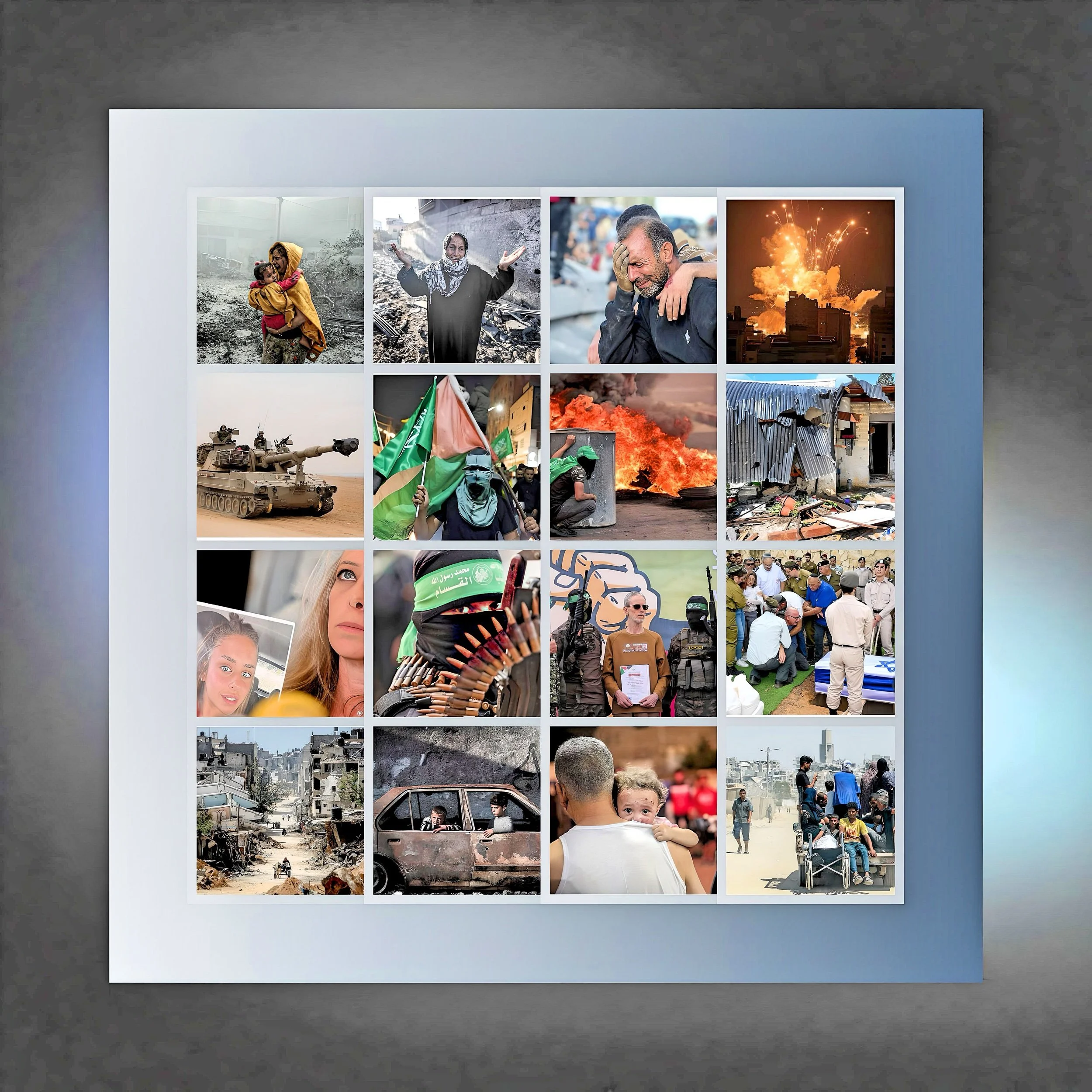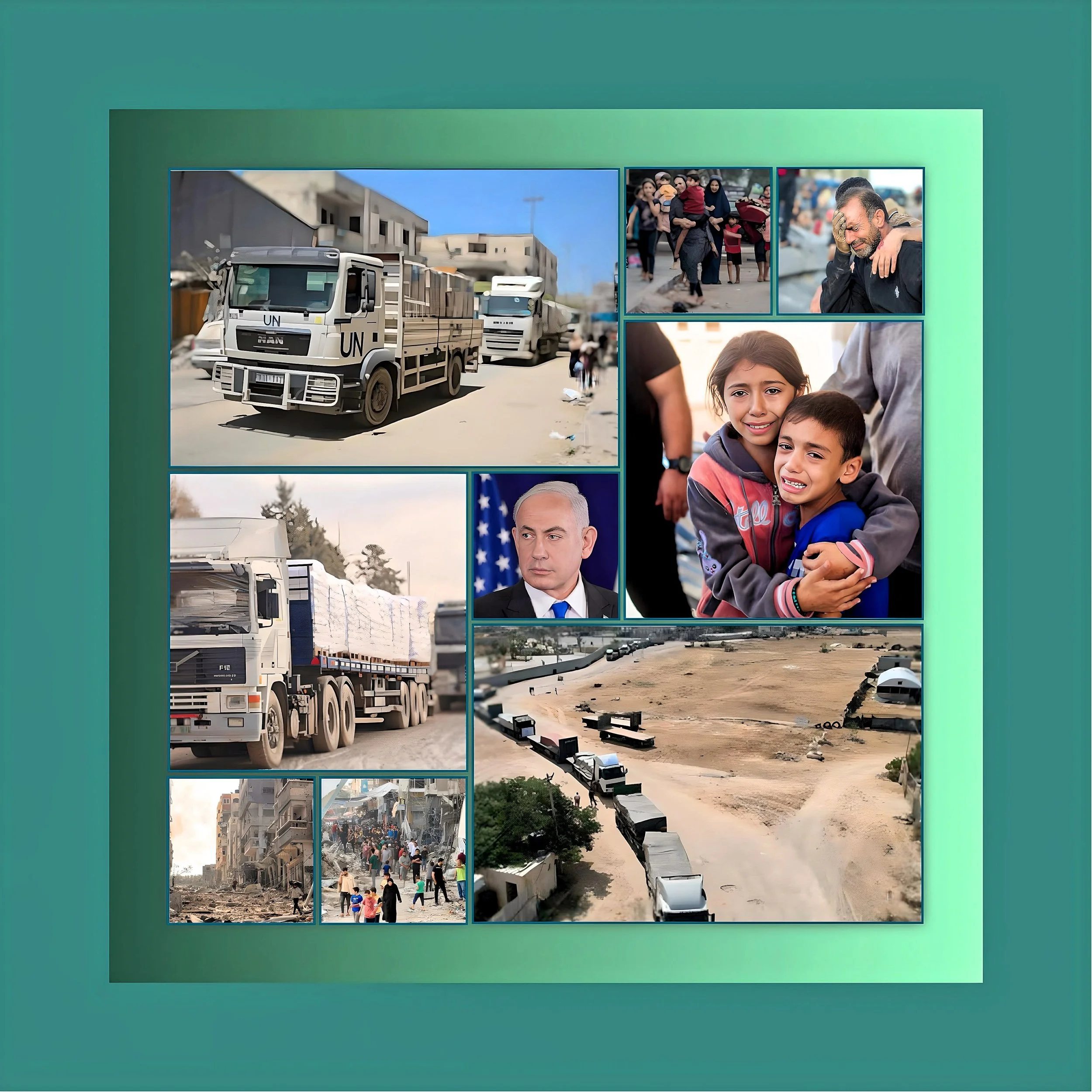Gaza: The Land of No Good Options and the Search for an Out-of-the-Box Solution
Introduction
The Gaza conflict, now in its second year following the October 2023 Hamas-led attack on Israel, has devolved into a protracted stalemate characterized by unprecedented humanitarian suffering, geopolitical deadlock, and a glaring absence of viable military or political solutions.
Israel’s pursuit of “total victory” over Hamas has yielded neither security nor stability, while Hamas retains enough residual power to frustrate Israeli objectives.
Meanwhile, Gaza’s civilian population endures catastrophic conditions, with over 2 million Palestinians facing famine, repeated forced displacements, and the near-total collapse of infrastructure.
International efforts to broker ceasefires or reconstruction plans have faltered, stymied by competing agendas, distrust, and the lack of a coherent vision for Gaza’s future.
We hereby examine the structural barriers to resolution, evaluate existing proposals, and explore unconventional strategies to break the cycle of violence and deprivation.
The Military Quagmire: Israel’s Strategic Limitations
Erosion of Israeli Military Superiority
For decades, Israel relied on airpower and defensive technologies like the Iron Dome to deter threats from Gaza and Lebanon.
However, Hamas and Hezbollah have evolved into decentralized, urbanized militias capable of sustaining prolonged conflicts, eroding Israel’s qualitative military edge.
The Israel Defense Forces (IDF) now face a dual challenge: a grinding counterinsurgency in Gaza and escalating tensions with Hezbollah in Lebanon.
Northern Command chief Ori Gordin has acknowledged that a limited ground incursion into Lebanon would, at best, create a temporary buffer zone, not a decisive victory.
Military theorist Eran Ortal argues that Israel lacks the capacity for a “decisive war” against Hezbollah as of 2024, necessitating a delay in rebuilding depleted stockpiles of munitions and addressing systemic weaknesses in ground-force readiness.
The Gaza Dilemma: No Exit Strategy
Eleven months into the Gaza campaign, Israel remains trapped in a paradox: withdrawing would allow Hamas to regroup, yet continued occupation fuels international condemnation and humanitarian crises.
Prime Minister Benjamin Netanyahu’s coalition government, dependent on far-right ministers like Itamar Ben-Gvir and Bezalel Smotrich, rejects compromises that might preserve Hamas’s governance role or enable Palestinian Authority (PA) control.
This political calculus leaves Israel without a credible “day after” plan, perpetuating a cycle of tactical gains and strategic stagnation.
As of March 2025, the IDF controls key corridors like Philadelphia but faces guerrilla resistance in urban centers, with Hamas leveraging tunnels and civilian shields to protract the conflict.
Humanitarian Catastrophe: The Human Cost of Stalemate
Collapse of Aid Systems
The U.S.-built maritime pier, intended to bypass land restrictions and deliver aid via Cyprus, collapsed within weeks due to logistical failures and Israeli obstruction.
Only 29 trucks transported aid through the $320 million structure before its dismantling, underscoring half-measures' futility in addressing Gaza’s needs.
Land crossings remain bottlenecked, with Rafah closed since May 2024 and Kerem Shalom operating at reduced capacity. Over 50 million tons of rubble—a byproduct of Israeli bombardment—now choke Gaza’s streets, complicating aid delivery and reconstruction.
Health System in Freefall
Hospitals like the European Gaza Hospital in Khan Younis have become emblematic of the crisis. Forced evacuations under Israeli fire left critically injured patients stranded on roads, with ventilators and surgical equipment abandoned.
Dr. Haseeb Khawaja, a volunteer medic, described scenes of amputees “hobbling on crutches through the rubble,” a stark illustration of systemic collapse. The UN estimates that 90% of Gaza’s population faces acute food insecurity, with child malnutrition rates surpassing those of wartime Yemen.
Conventional Solutions and Their Shortcomings
The Two-State Mirage
The two-state solution, long the cornerstone of international diplomacy, has lost credibility among both Israelis and Palestinians.
Hamas rejects Israel’s right to exist, while Netanyahu’s government has accelerated settlement expansion in the West Bank, rendering territorial contiguity impossible.
Polls indicate that only 35% of Israelis and 42% of West Bank Palestinians still support a two-state framework, with Gazans favoring a one-state solution by narrow margins.
The Arab League’s 2025 reconstruction plan, which envisions a technocratic interim administration followed by PA rule, ignores Hamas’s entrenched power and Israel’s refusal to cede security control.
Ceasefire Cycles and Their Limits
The January 2025 ceasefire, mediated by Qatar and Egypt, secured the release of 33 hostages and 600 Palestinian prisoners but failed to address core issues.
Hamas suspended further releases in February, accusing Israel of reneging on withdrawal commitments, while Netanyahu threatened to resume hostilities unless “all hostages” were freed. While temporarily halting violence, such stopgap measures perpetuate a status quo where neither side incurs sufficient pain to compromise.
Out-of-the-Box Proposals: Innovations and Obstacles
The Berlin Model: Partitioned Governance
Drawing parallels to post-WWII Berlin, some analysts propose dividing Gaza into Israeli- and Egyptian-administered zones overseen by an international consortium. Northern Gaza would fall under Israeli security control with Jordanian and Emirati economic partners, while Egypt would manage the south alongside Qatar and Turkey.
This approach acknowledges Hamas’s enduring influence while circumventing direct negotiations. However, Egypt vehemently opposes permanent Israeli presence in Philadelphi, citing violations of the 1979 peace treaty, and Qatar’s ties to Hamas complicate multilateral coordination.
Marshall Plan-Scale Reconstruction
Arab states have floated a $53 billion Marshall Plan analog to rebuild Gaza by 2030, featuring airports, resorts, and industrial zones.
The proposal conditions funding for Hamas’s disarmament and PA reforms—a nonstarter for Hamas and a political liability for Mahmoud Abbas’s unpopular PA.
Moreover, the plan’s reliance on Saudi and UAE financing is precarious, given both nations’ reluctance to engage without Israeli security guarantees.
International Peacekeeping Forces
Former Israeli negotiator Gershon Baskin advocates deploying UN-mandated peacekeepers to protect civilians, facilitate aid, and enforce demilitarization.
This echoes the 2006 Lebanon model, where UNIFIL monitored Hezbollah’s disarmament. However, Israel rejects any role for “biased” international actors, while Hamas frames peacekeepers as occupation enablers.
The Trump Factor: Displacement and Disruption
The Trump administration’s Gaza policy, outlined in February 2025, prioritizes displacement and economic transformation. Trump proposes resettling Palestinians in Arab states, demolishing Gaza’s infrastructure, and developing “luxury resorts” and a “Singapore-style” free trade zone.
While applauded by far-right Israelis like Ben-Gvir, the plan violates international law and has drawn condemnation from Jordan, Egypt, and the EU. Arab leaders counter with a technocratic transitional body, but its six-month mandate and exclusion of Hamas render it stillborn.
Conclusion
Pathways Through the Impasse
The Gaza conflict resists conventional solutions due to asymmetrical power dynamics, ideological intransigence, and the absence of trusted mediators. A sustainable resolution requires:
Conditional Ceasefires linked to phased withdrawals, hostage exchanges, and third-party monitoring.
Regional Security Guarantees involving Egypt, Jordan, and Gulf states to underwrite Hamas’s demilitarization in exchange for reconstruction aid.
Electoral Renewal in the PA and Israel will empower leaders untainted by the current stalemate.
Innovative Governance Models include confederal arrangements with shared Israeli-Palestinian jurisdictions in Gaza and the West Bank.
Without bold, coordinated action, Gaza will remain a land of no good options—a humanitarian time bomb and a catalyst for regional escalation. The window for innovation is constricting but not yet closed.






